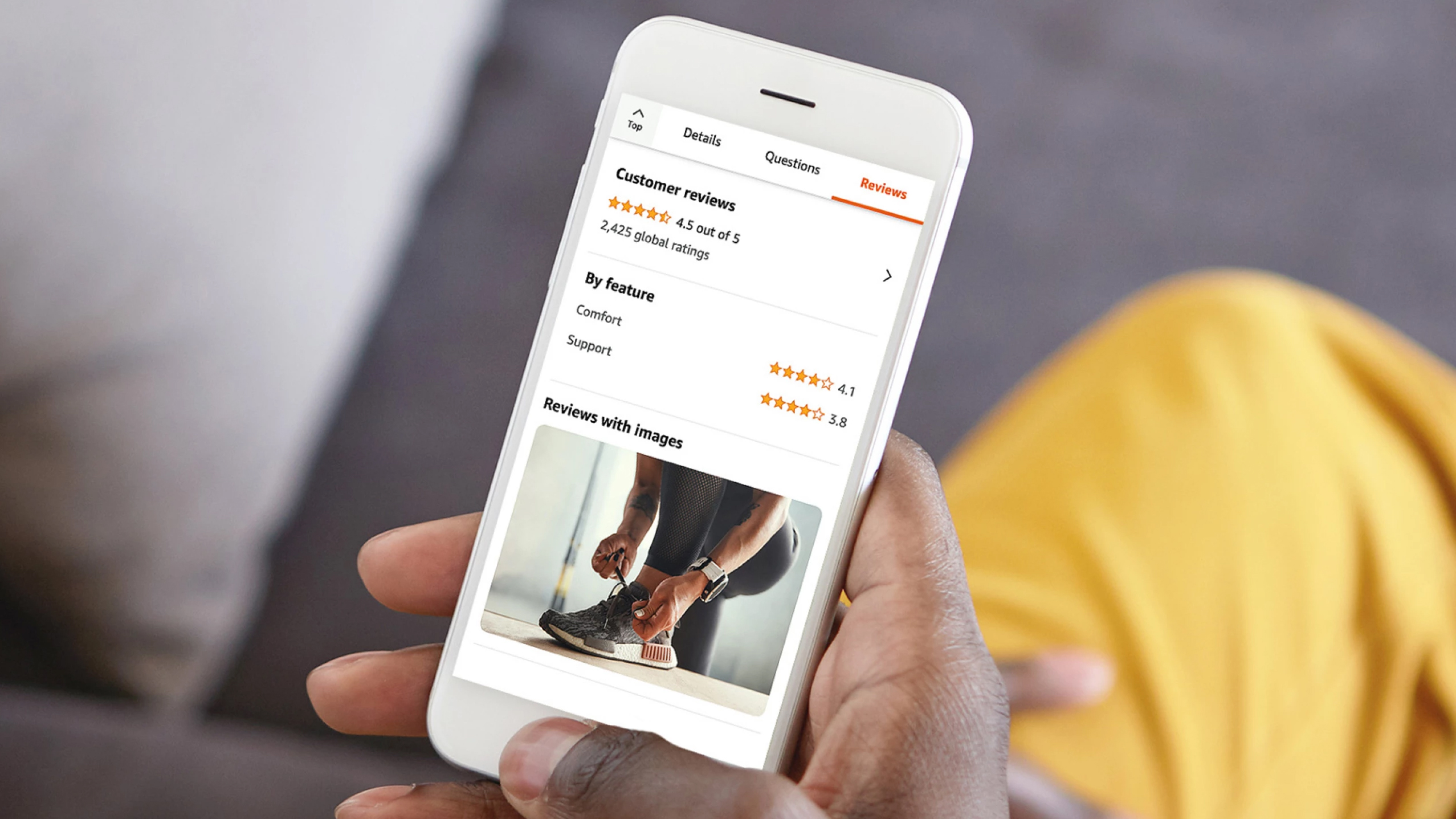Amazon says even its AI can't stop fake reviews – here's how to spot them
Online shopping could be a minefield for while yet

Amazon has renewed its war on fake reviews by developing new AI-powered tools to help tackle the problem, but the retail giant admits they aren't enough to solve the issue on their own.
In a new blog post, Dharmesh Mehta, who's Amazon's VP of Worldwide Selling Partner Services, writes "we must work together to stop the fake review brokers that are the source of most fake reviews", calling on "private sector, consumer groups, and governments" to work together to stop the brokers.
What are these so-called 'fake review brokers'? Amazon says the brokers have become an industry in recent years, and have "evolved in an attempt to evade detection". They work by approaching average consumers though websites, social media or encrypted messaging services and getting to them write fake reviews "in exchange for money, free products, or other incentives".
Amazon says it's using increasingly sophisticated AI tools and machine learning to stem the tide. These fraud-detection programs apparently analyze thousands of data points, including sign-in activity and review history, to help spot fake reviews. The figures involved are pretty staggering; Amazon says that last year it blocked over 200 million suspected fake reviews in 2022, and sued over 10,000 Facebook group administrators.
But Amazon's financial might and its increasingly sophisticated AI tools seemingly aren't enough to stop fake reviews. The retail giant says that because much of the misconduct happens outside of Amazon’s store "it can be more challenging to detect, prevent, and enforce these bad actors if we are acting alone".

So Amazon has made a three-point plan to get some extra help. Firstly, it wants there to be more cross-industry sharing about fake review brokers and their various tactics and techniques. Secondly, it wants governments and regulators to use their authority more to take action against bad actors.
And lastly, in a veiled nudge at Meta and other social media giants, it's asked that "all sites that could be used to facilitate this illicit activity should have robust notice and takedown processes". Amazon wants to work with "these companies" (read Facebook, WhatsApp, Signal and more) to help improve their detection methods.
Sign up for breaking news, reviews, opinion, top tech deals, and more.
Whether or not these three steps are realistic remains to be seen, but the message from Amazon is clear – it doesn't think it can stem the tide of fake reviews on its own, and that's a problem for all of us. Until that improves, it's more important than ever to follow advice on how to spot fake Amazon reviews during Prime Day and other big shopping events.
How to spot fake Amazon reviews

We've been highlighting the problem of fake Amazon reviews for over a decade, and it's clear that the issue has become a game of whack-a-mole – while Amazon's tools have improved, the retail giant admits that the "tactics of fake review brokers have also evolved in an attempt to try to evade detection".
This is a big problem for the average online shopper – in the UK, the consumer group Which? says that around one in seven reviews are fake. And that means you can be misled into buying poor-quality products.
Mehta's blog post is a reminder than even the world's biggest tech giants, and the latest AI technology, aren't powerful enough to stop fake reviews. And that means we all need to be increasingly savvy when shopping online.
As our in-depth guide to spotting fake Amazon reviews highlights, there are some simple red flags to look out for in product reviewers, including "overly promotional language, repeated reviews, and reviews for an entirely different product".
But there are also handy third-party tools like ReviewMeta and FakeSpot (which was recently bought by the Firefox owner Mozilla) that can help you use AI to detect fake reviews and scams. These allow you paste in Amazon product URLs to get an analysis of the reviews or use Chrome extensions for a quick check.
While Amazon's three-point call-out for outside help is understandable, recent history suggests that progress is going to be slow – which means we'll all need to remain on guard when doing our online shopping, particularly during big events like Amazon Prime Day 2023.

Mark is TechRadar's Senior news editor. Having worked in tech journalism for a ludicrous 17 years, Mark is now attempting to break the world record for the number of camera bags hoarded by one person. He was previously Cameras Editor at both TechRadar and Trusted Reviews, Acting editor on Stuff.tv, as well as Features editor and Reviews editor on Stuff magazine. As a freelancer, he's contributed to titles including The Sunday Times, FourFourTwo and Arena. And in a former life, he also won The Daily Telegraph's Young Sportswriter of the Year. But that was before he discovered the strange joys of getting up at 4am for a photo shoot in London's Square Mile.